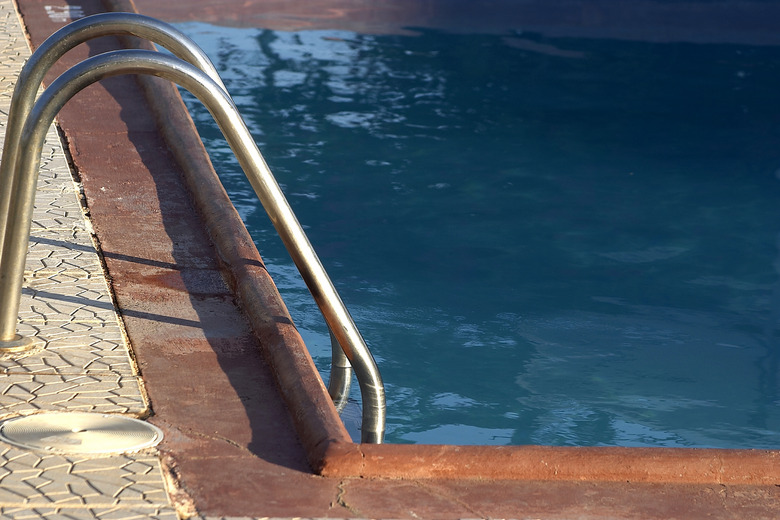How To Backwash An Inground Pool
From time to time, an in-ground pool filter needs cleaning. This could be when the pump gauge is close to redlining, or when the sand in the pump is dirty. If the pool water level is high, for example after a storm, you can backwash the filter and remove excess water.
Step 1
Add water if the pool level is not more than halfway on the skimmer opening. Turn off the water heater about 15 minutes before you are ready to backwash. Open the drain valve, then close the skimmer valve on the pump. When the water has cooled, turn off the pool pump.
- From time to time, an in-ground pool filter needs cleaning.
- This could be when the pump gauge is close to redlining, or when the sand in the pump is dirty.
Step 2
Close the drain valve. Remove the pump basket and any debris in it.
Step 3
Turn the pump lever to "backwash." Check that the backwash hose is connected and rolled out to direct water away from the pool. The air-relief valve, located on top of the pump filter, should be opened.
Step 4
Turn the pump on and open the drain valve. After the water starts flowing, open the skimmer valve so that more water flows out. When you have established a good flow, close the air-relief valve.
- Remove the pump basket and any debris in it.
- After the water starts flowing, open the skimmer valve so that more water flows out.
Step 5
Allow the pump to run for about seven minutes. Monitor the water in the sighting glass until the water runs clear. Turn off the pump at this time and move the lever to "rinse." Turn the pump on again for about a minute. Shut off the pump when done.
Step 6
Turn off the pump and move the lever to "filter." Turn the water heater on. Test the water with a pool test kit to see if the chemicals need adjusting, then adjust accordingly.
- Allow the pump to run for about seven minutes.
- Turn off the pump and move the lever to "filter."
Backwash An Above Ground Pool?
To keep everyone healthy who enjoys your above-ground pool, you must properly maintain its filtration system. To ensure the filter is doing a good job of cleaning the water in your pond, it's important to routinely backwash your above-ground pool filter pump. Turn on the backwash valve and let water run through the backwash hose for 2 to 3 minutes, or until the water coming out runs clear. Put the filter valve on the rinse position. Doing this compacts the sand in the filter again, as the backwashing tends to stir it up. Generally, you should backwash a sand filter once a week. Most sand filter tanks are made of fiberglass, metal or concrete. Within the tank is located the silica sand. A good way to prolong the life of your filter and keep your pool clean is to vacuum it regularly. Work on sucking up all the debris that you can see. As you go, debris will be moved through the vacuum plate and into the pump, where the water will be cleaned of debris by passing through the sand filter. This will ensure that the filter is clean and that it continues to do a good job of keeping the pool water clean and free of debris. They only need a power source or an internally charged battery to work. Some good features to look for in a robotic cleaner include the following: * 4-Wheel Drive and Wide Tires
A robotic pool cleaner needs to be able to quickly and easily get around your pool to do a good job of cleaning. Easy to Lift
You want a robotic pool cleaner that you can lift out of the pool without too much trouble. Otherwise, it will be too difficult to remove for cleaning and maintenance. * Sensors and Tangle-Free Cord
The last thing you want is the robotic cleaner to get stuck cleaning the same corner of your pool for hours. Well-circulated water gets properly filtered and cleaned. For this to occur, it's important that your pool pump runs at least eight hours a day. The time of day you choose depends on your preference.
- To keep everyone healthy who enjoys your above-ground pool, you must properly maintain its filtration system.
- To ensure the filter is doing a good job of cleaning the water in your pond, it's important to routinely backwash your above-ground pool filter pump.
- Most sand filter tanks are made of fiberglass, metal or concrete.
Things Needed
- Backwash hose
- Pool water test kit
